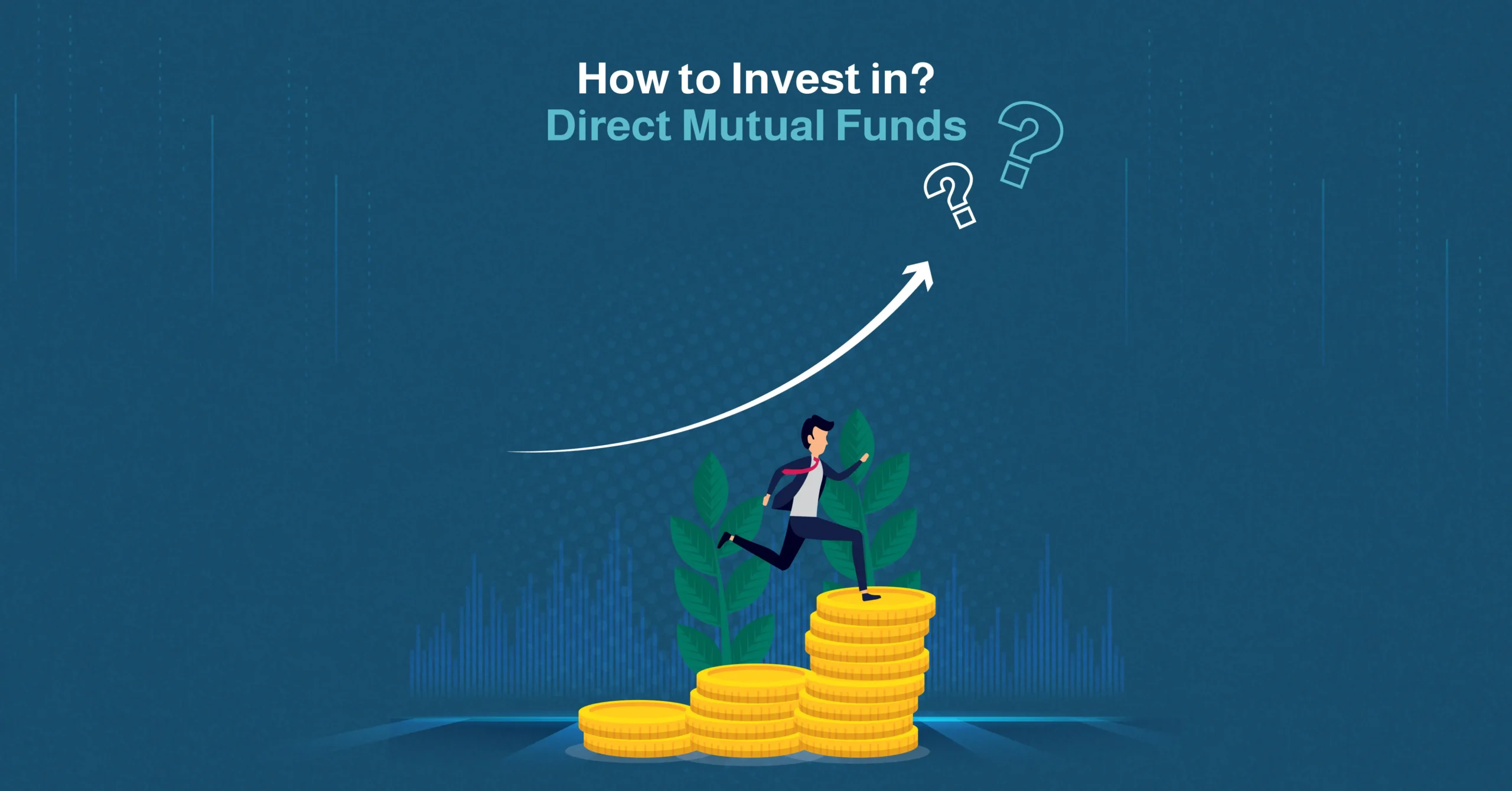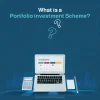With more investment options and financial products than you can shake a stick at, investing may feel overly complicated, especially if you are new to it. Mutual funds offer an easy entry point for such investors. Funds are pooled from multiple investors and spread across different assets. While this may appear to be fairly straightforward, it doesn’t mean there are no choices to make. Possibly the most important choice is whether to opt for a direct or regular plan.
If you would like to keep costs low while investing, cutting out the middleman may be the answer. This will save you additional fees, which may not seem like a lot, but over a few years could be rather substantial and would do better as investment capital. To invest in mutual funds, you simply need to open an account, choose your funds, and begin building your wealth.
We are going to take a closer look at direct mutual funds, their advantages, a step-by-step guide on getting started, the risks involved, and finally, how platforms like Gamma Assets can help balance growth and stability.
More topics can be read on the Gamma blog
What Are Direct Mutual Funds and How Do They Work?
An understanding of what mutual funds are is important before we delve into how to invest in direct mutual funds. A mutual fund is a pool of money collected from various investors and managed by professionals. The professional known as a fund manager will invest this collective capital into a mix of stocks, bonds, or other securities. This will give even the smallest of investors a diversified portfolio.
There are two main ways to invest in mutual funds: either regular plans or direct plans. A regular mutual fund is purchased through a distributor, either a broker or a financial advisor. These are essential middlemen who work on a commission basis, meaning that there will be higher costs with regular mutual funds. The alternative is a direct mutual fund, where the investor buys directly from the fund house via online platforms. This way, the investor saves on the distribution fees by lowering the expense ratio of the fund.
While the cost savings may appear minimal, they can make a big impact in the long run. A minimal 1% difference in annual costs could reduce your returns by thousands of Riyals over a 10-15 year investment period. Direct mutual funds offer the same as regular mutual funds, the same management, the same funds, the same investment opportunities, but all without the additional costs.
For the news investors amongst us who are wondering how to invest in direct mutual funds, the answer is simple. You get access to the same professional management and diversification, but with more of your capital working for you rather than going towards commission.
Key Benefits of Direct Mutual Funds Over Regular Plans
The difference in cost is usually the first thing noticed by new investors when learning how to invest in direct mutual funds. We have established that cutting out the middelman will save you money over the long term. The cost is not the only advantage; direct mutual funds also provide greater transparency and control. You are not relying on a broker’s recommendations. The decisions are yours; you choose the funds that you believe in and that work for your portfolio, you decide how much you wish to invest, and when to make changes. This is perfect for investors who prefer value, independence, and flexibility.
We have tabulated the differences between direct plans and regular plans.
| Feature | Direct Mutual Fund | Regular Mutual Fund |
| Expense ratio | Lower, no distributor commissions | Higher, includes distributor commissions |
| Returns | Higher in the long run due to lower cost | Slightly lower over time |
| Control | Investor chooses directly | Intermediary decisions |
| Transparency | Full visibility of fund options | Limited, depends on distributor |
| Accessibility | Available online through fund houses and apps | Purchased via brokers or advisors |
If we imagine a scenario where two investors invest 1000 SAR each into the same mutual fund for 10 years. The investor who made use of the direct plan could end up with a significantly higher return, just by paying less in fees.
Step-by-Step Guide on How to Invest in Direct Mutual Funds
Learning how to invest in direct mutual funds is more straightforward than you might think, as the whole process occurs online and can be set up in a day. It is vital to ensure you have the correct documentation and a clear investment plan.
Step 1: Choose a Platform or Fund House Portal
A good place to start is choosing where you are going to invest. This could be directly through a mutual fund company’s website or through an approved online investment platform. Be sure to look out for platforms that offer clear, direct plans while providing tools for comparison and performance tracking, too.
Step 2: Complete your KYC (Know Your Customer) Requirements
An important part of the process is to verify your identity; this is part of a broader fraud prevention scheme and essential for security and compliance. Most platforms these days have e-KYC, allowing you to upload copies of your national ID, proof of address, and either a passport-sized photograph or, more commonly now it a selfie or short video.
Step 3: Research and Compare Funds
Do not rush this step, as you may be excited and want to jump on an opportunity. Taking a little more time to research will ensure you are choosing the right mutual fund for your needs. We suggest that you consider factors like past performance, expense ratio, risk level, and the type of fund (equity, debt, or hybrid). It is important to remember that past returns do not guarantee future returns, but they may serve as insight into how a fund behaves in different market conditions.
Step 4: Decide on your investment method
You can make your investment in one of two ways: first, you could invest a lump sum, or you could schedule a SIP, or Systematic Investment Plan. A SIP means that you invest a fixed amount at set intervals, which could help smooth out the effects of market volatility. SIPS are a practical way for new investors exploring how to invest in direct mutual funds.
Step 5: Make your first Investment
This is as simple as entering your investment amount, choosing your payment method, and confirming your transaction. Shortly after, you should see the units you purchased reflected in your account.
Step 6: Monitor and Review Your Portfolio
Self-management is a requirement of direct mutual funds; you need to check performance regularly, but avoid making changes due to short-term fluctuations. Ensure you stick to your goals and review annually to make sure your investments remain aligned with your goals and needs.
If you were to invest 500 SAR monthly in a direct plan that averages 10% annual growth, you could build significant wealth over 10 to 15 years. Consistency is king when it comes to investing. Learning how to invest in direct mutual funds can set you up for the life you have dreamed of.
Risks and Factors to Consider Before Investing in Direct Mutual Funds
Learning how to invest in direct mutual funds may open the door to higher returns, but it is not without its risks. As an investor, you have more control but are also solely in charge of decision-making. We are going to have a look at some of the risks associated with direct mutual funds.
-
Self-management
You will need to complete your own market research, as you do not have an advisor or distributor to guide your decisions. This will require your time, effort, and willingness to keep informed of market trends,
-
Market Volatility
As with any market-linked investment, mutual funds may also fluctuate in value. While short-term declines may be normal, they can be rather unsettling for new investors. It is important that you keep your wits about you and stick to your plan, focusing on the long-term goals rather than reacting,
-
Fund Selection Risk
Your returns can take a serious blow if you choose the wrong funds. This could be linked to poor performance, high volatility, or a disconnect with your goals. Risks can be mitigated by diversification across fund types
-
Emotional Investing
This is easier said than done. Without the perspective of a third party, it is all too easy to make rash decisions or decisions based on market headlines. Discipline is key here.
For the newer investor, figuring out how to invest in direct mutual funds, these risks are not deal breakers but simply factors that should be considered. With a clear plan, good research, and diversification, direct mutual funds can be an effective, low-cost method to build long-term wealth.
Smart Investing Made Easier with Platforms Like Gamma Assets
While direct mutual funds might be a low-cost method of building wealth, they are also labor-intensive, requiring ongoing management. Pairing them with a more stable investment, like real estate, can help balance the risk.
Platforms like Gamma Assets offer real estate-backed opportunities that provide steady returns alongside your other investments. While learning how to invest in direct mutual funds might help you benefit from market growth, adding assets with lower volatility can make your portfolio more resilient in the long run. Allowing you to gain advantages from both investments without having to sacrifice control or cost efficiency.
Direct mutual funds offer investors a low-cost, straightforward method to grow wealth. Getting rid of the middleman allows you to benefit from additional compounding returns over time. Knowing how to invest in direct mutual funds, from selecting a platform to choosing your funds, puts you in charge of your financial journey. While they require self-management, when they are paired with other assets, they can form part of a well-balanced, resilient portfolio. What are you waiting for?
You can start investing now from the Gamma Asset Investment Platform
FAQ
Is it better to invest in direct mutual funds or regular mutual funds?
Direct mutual funds usually deliver higher returns over time because of the lower fees. Regular plans may suit those wanting personal advice, but costs are higher.
What is the minimum amount required to start investing in direct mutual funds?
Many funds allow investments from as little as 500 SAR per month via SIP, making them beginner-friendly.
Can I switch from regular mutual funds to direct mutual funds?
Yes, you can redeem your regular plan units and reinvest in a direct plan, or use a platform’s switch option. Check tax and exit load rules first.













